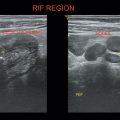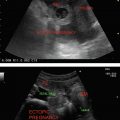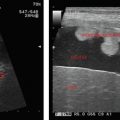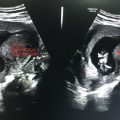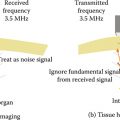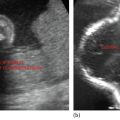A gram of prostate tissue is equivalent to 1 milliliter of volume; hence, volume could be converted to weight.
Prostate: Chestnut shaped, homogeneous, and hypoechoic gland with <5 milliliters in size up to 12 years.
Seminal vesicles: Paired, hypoechoic structures cephalad to the base of the prostate; usually ~1 centimeter front to back.
Four glandular zones surround the prostatic urethra:
1. Peripheral zone (PZ)—70% site for most prostatic cancers.
2. Transitional zone (TZ)—5% site of origin of benign prostatic hyperplasia (BPH).
3. Central zone (CZ)—25% relatively resistant to disease process. Only 5% cancers start here.
4. Periurethral area—1% internal prostatic sphincter.
On USG, it is difficult to identify these zones in normal prostate and only two zones are identified.
Outer gland: Peripheral (PZ + CZ)
Inner gland: (TZ + anterior fibromuscular stroma + internal urethral sphincter)
Both outer and inner glands are separated by a surgical capsule.
Neurovascular bundle lies bilaterally along the posterolateral aspect of the prostate and is a preferential pathway of tumor spread.
Corpora amylacea, seen as echogenic foci, develop along the surgical capsule and periurethral glands (proteinaceous debris in dilated prostatic ducts).
Maximal transverse width (T): Right to left
Anteroposterior (AP): Anterior midline to rectal surface
Length (L): Maximal head to foot
Volume is calculated by the formula
Stay updated, free articles. Join our Telegram channel

Full access? Get Clinical Tree


